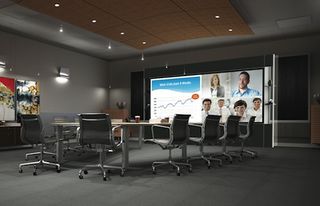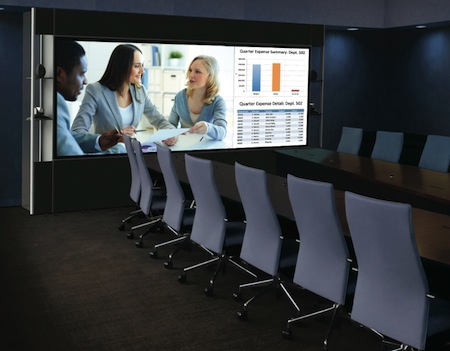Everybody loves a great sequel. It's all the familiar aspects of a previously successful platform with the added benefits of new plot twists. Bearing that in mind, Prysm has some great sequel marketing for us as we head into InfoComm. Leading with the debut of its second-generation Laser Phosphor Display (LPD) technology today, the company also indicates that there will be more announcements about industry collaborations closer to the show opening date.
- But first and foremost, let's talk second generation. Citing the evolution of other video display technologies across various sizes and resolutions, Prysm vice president of sales and technical operations Dana Corey observed, "The expectation has been that LPD will morph over time, and now we've reached the second stop on the train ride that we're on."
- At its core, LPD remains the same energy-efficient, wide-viewing angle, tight-seamed technology it always has been, but now a slight change in the method of image creation "gives us benefits around uniformity, resolution, and overall image quality," Corey said.
- Statistically speaking, that means the new "enhanced mode" offers a 427x320 per tile pixel resolution with 178-degree viewing angles. The next generation was also built to be highly scalable, allowing for bespoke video wall configurations suited to any indoor environment.
To make LPD even more ready for any AV integration occasion, Prysm has built the second-generation platform into two turnkey video wall packages, complete with built-in processing. The 117-inch and 190-inch models were created with optimal meeting-room viewing distance ratios in mind, particularly in the subset of meeting rooms that are meant to host 30 people or more. "The 117-inch gets us to about 40 feet, and the 190-inch gets us to about 60 feet, and probably could go a bit further than that," Corey indicated. "Today it's about maximizing the usability of meeting space. This allows team members to collaborate better and share information dynamically. This leads to higher room utilization and the benefit per square foot is much higher."

These new turnkey video wall systems answer to a big buzzword at InfoComm — collaboration — as Corey is the first to admit. "We've heard immersive and collaboration over the years, but what we're finding is an overall momentum to move toward multipurpose rooms. Corporations and companies are demanding spaces that are not as dedicated as they once were, and there's a move toward true collaboration with multiple pieces of content on PowerPoint, telepresence, and spreadsheets. The demand is for it to be interactive in the sense of information flow, but in a size that meets these meeting rooms, where multiple people can actually collaborate beyond just seeing somebody on the screen."So what will the response be at the show? "I think the response is going to be quite large," Corey said. "First because of our collaboration with a couple of significant players in the market that will drive a lot of excitement and anticipation around this technology. And also because there's an overall driving force that will come from this new collaboration space with a new product. Those are quite the rolling thunder. We'll roll straight into InfoComm and generate quite the buzz."



